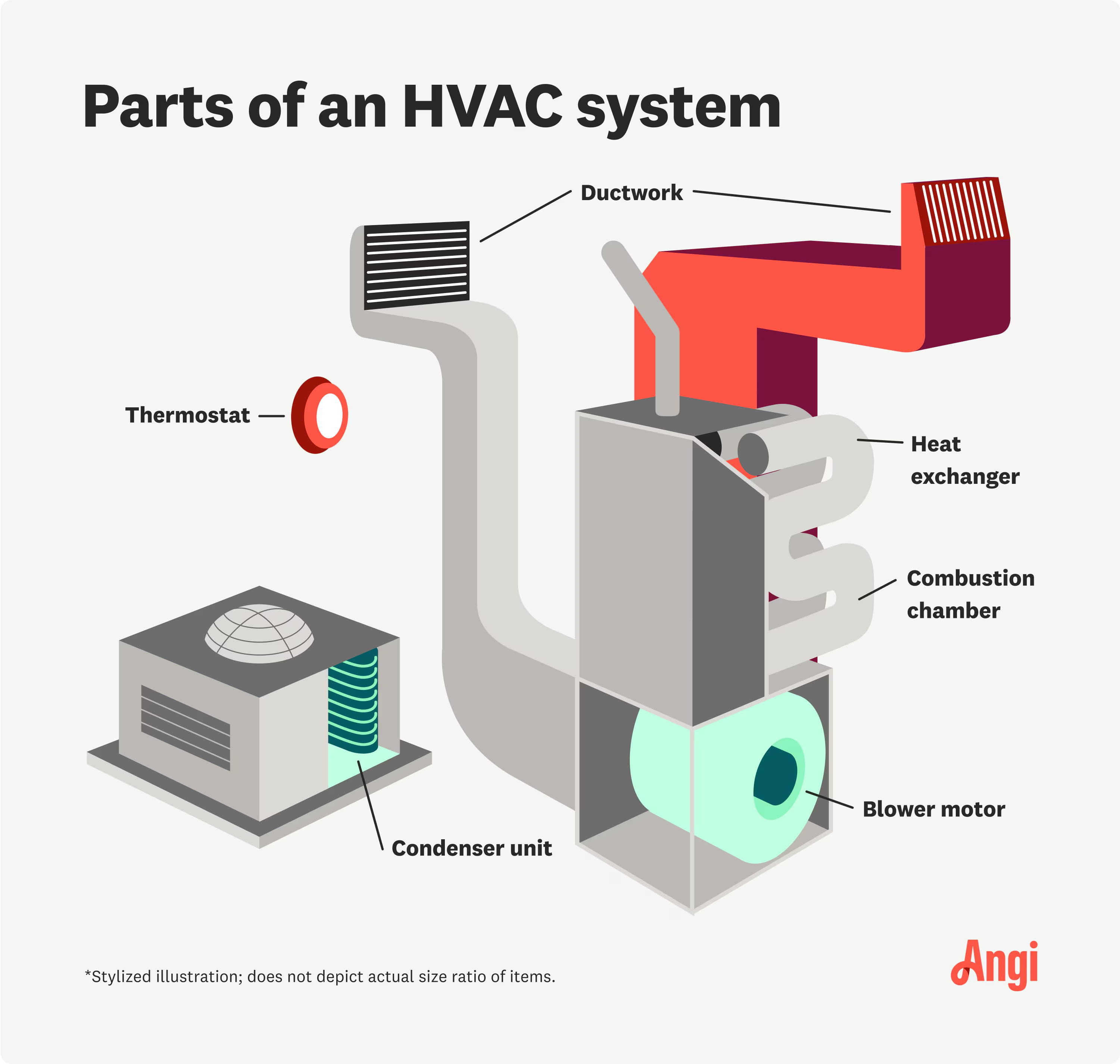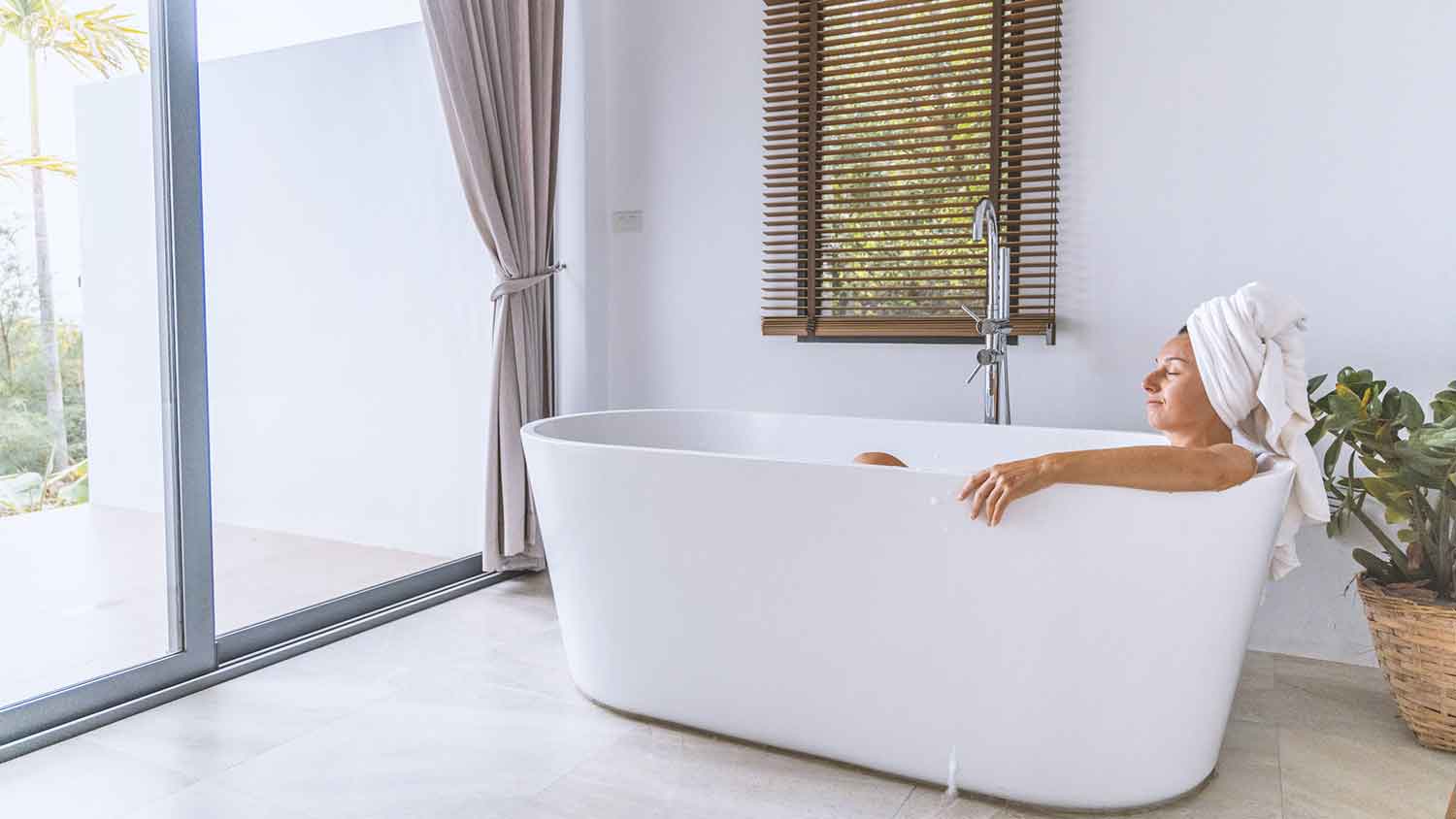What Is Central Air and Is It Right for Your Home?
Not a fan of window units? Central AC may be a better way to chill out.


Central AC cools, purifies, and dehumidifies the air in a home all at once, and it doesn’t take up as much interior space as portable units do.
There are two types of central air conditioners: split and packaged systems. Which one you choose will depend on whether or not you already have a heating system.
Expect a new central air system to cost $5,900 on average.
There’s nothing better than a cool breeze on a hot summer day. That’s even more true when temperatures start soaring inside and you need to turn to AC to get some relief. Central air is a whole-house cooling system that quickly and easily cools your home, keeping you comfortable when the temperature is anything but. There are several different options available, so it helps to learn what central air conditioning is, how it works, and the pros and cons so that you can decide whether it’s right for you.
What Is Central Air and How Does It Work?

Central air conditioning is a system of supply and return ducts that circulate cool and hot air equally through all spaces in a home. When activated, the system releases cold, purified air from supply ducts. As the air warms back up, return ducts reabsorb the air, which is once again cooled and recirculated.
Depending on the type of central AC, it may consist of either a single outdoor unit that contains all the compressors, fans, blower, and heat exchangers or two units—one placed inside the home and one outside of it. These systems are powered by air, water, or a combination of both to function—air power better regulates humidity levels than water power.
Parts of Central Air

Central air works like a heart, circulating cooled air through your home and drawing hot air outside. There are tons of different parts to a central air system, but here are a few key components.
Thermostat
The part you’re most likely to be familiar with is the thermostat. Located on a wall inside your home, this control unit tells the system the desired temperature and controls whether the system is on or off.
Compressor
The AC compressor squeezes the refrigerant inside your air conditioner unit to the right pressure before pumping it throughout the system via a series of tubes.
Evaporator Coil
Hot air inside your home blows across the HVAC evaporator coil, which helps the refrigerant absorb heat, leaving cool air behind. The refrigerant inside the evaporator coil converts from liquid to gas as the heat is absorbed.
Condenser Coil
The compressor pumps refrigerant away from the evaporator coil to the condenser coil, which cools the refrigerant and returns it to a liquid state. The condenser coil is located outside the home, along with another fan that dispels the heat to the outside.
Circulating Fan
The air that was cooled by the evaporator coil is moved throughout the house via a circulating fan. This fan draws warm air in through the return vents and releases the cooled air through the supply vents.
Blower Motor
The blower motor is the motor that powers the circulating fan and pushes the air through the ductwork. Blower motors on AC units are either single-speed or variable-speed.
Ductwork
The ductwork is the series of ducts, or tubes, that carry the cooled air from the AC to the supply vents in each room. It’s the pathway through which the conditioned air travels. The AC ducts are the same ones your heating system uses.
Expansion Valve
The refrigerant continues its route after moving through the condenser coil. It passes through a thermal expansion valve that controls how much refrigerant is returned to the evaporator coil at a time, beginning the process over again.
Types of Central Air Conditioning
There are two main types of central air conditioning, which vary in a couple of important ways.
Split AC Systems
Split AC systems are composed of two operation cabinets: one indoors for heating and one outdoors for cooling. This is the recommended setup for those with a heating system in place because you can simply add an air conditioner to complement it—and save a lot on what it would cost to replace your HVAC system altogether.
Packaged Units
Unlike split systems, packaged units contain all the necessary machinery for heating and cooling in one outdoor compartment. Although it’s often more costly, this might be the right choice if your home doesn’t have any existing HVAC setup. While you might pay more upfront for the unit, you’ll save on installation because you won’t have to install two separate systems.
Pros of Central Air
Central AC offers many benefits, like air purification and efficient cooling. Let’s take a closer look at the pros.
Ease of Use
All it takes is pressing a button to cool your entire abode with a central air conditioning system. On the flip side, portable units, like those that fit into your window or roll around the room, will only reliably cool down the room they’re in—they’re also loud and can even trip your breaker. A central unit is designed to work seamlessly in your home.
Aesthetics
Another annoying thing about portable air conditioners is how much valuable space they occupy inside a home. After all, nothing will destroy a beautiful view faster than a rattling window AC unit. That’s no issue with central air because the machinery sits outside the home.
Purifies Air and Removes Humidity
Central air conditioners release cool air through filters, which purify the air as it enters a room. They also reduce humidity levels by absorbing warm air and removing moisture before recirculating it through a home.
Cons of Central AC
Central AC is great, but there are a few downsides to consider before you commit.
Increased Energy Costs
You might pay more in energy bills for a central air conditioning unit because they cool down an entire home rather than just one room. However, there are simple ways to avoid increased costs with such a system—like setting it to automatically turn on and off depending on a home’s internal temperature. Your home is more likely to stay cool if it’s at a lower temperature throughout, whereas one room that’s cooled down will probably heat up faster if the other spaces are still hot. That may also mean you need to use the machine less to achieve the desired temperature.
Maintenance and Cleaning
Central air vents can get dirty relatively quickly and aren’t as easy to clean or care for as individual AC units. Going into the vents to make repairs or remove dust can be risky, so you may need to hire an HVAC pro near you to do it instead. In general, aim to clean these features every two to five years or whenever you notice a larger-than-normal dust build-up in your home or any strange sounds coming from the ducts.
Expensive Installation
Installing central AC is far more expensive than the cost of one or two standalone units because of all the materials and labor required to set up return and supply ducts and vents. The cost for a new central air installation ranges from $1,500 to $4,000 on average.
Central AC vs. Portable AC
When deciding between central AC and a window unit or something like it, consider a couple of things. First, ask yourself how much time you spend in the space and if it’s worth it to cool every room. For example, if you’re sharing an apartment with roommates, you’ll only need one portable unit to cool your room. On the flip side, homeowners may have an easier time selling down the line with AC installed already. While it won’t increase the value of a home per se, it may make your abode more enticing to potential buyers.
Audrey Bruno contributed to this piece.





- Furnace Repair
- Air Conditioning Repair
- HVAC Repairs
- Furnace Installation
- Wood & Pellet Stove Repair
- Dehumidifier & Humidifier Repair
- Heat Pump Companies
- Swamp Cooler Repair
- Wood Stove Services
- HVAC Companies
- Commercial A/C Repair
- Geothermal Installation
- Air Conditioning Installation
- Boiler Repair
- 24 Hour Furnace Repair
- Geothermal Repair
- Heat Pump Repair
- Humidifier Installation
- Thermostat Repair
- Thermostat Installation
- Nest Installation
- Heating & Cooling
- Heating Repair
- Furnace Cleaning
- Furnace Tune-Up
- HVAC Technicians
- Subcontractors
- Furnace Maintenance
- Plumbing & Heating Companies
- Wood Stove Inspection
- Mini Split Installation
- Wall Heater Repair
- Duct Installers









